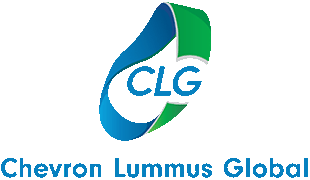Residue Upgrading, sometimes referred to as Bottom of the Barrel processing, consists of a wide range of technologies for separating, upgrading and converting the vacuum residue part of crude oils.
CLG is the only licensor to offer all residue upgrading technologies including: Residue Hydrocracking (LC-FINING, LC-MAX, LC-SLURRY), Residue Hydrotreating (RDS, VRDS, UFR, OCR), Coking, Solvent Deasphalting (Residue Solvent Refining or RSR); and combinations of the above where appropriate. In addition to the residue upgrading technologies, CLG offers the full spectrum of distillate and VGO hydroprocessing technologies. Consequently, CLG is uniquely positioned to support any residue upgrading project with the best available technology and solution for that particular project.
Residue upgrading approaches consist of:
Thermal processes such as visbreaking or coking. Visbreaking is a mild thermal conversion process which primarily reduces the viscosity of residues to reduce cutter stock requirements when blending residues into heavy fuel oil products. Coking is a full conversion thermal process that concentrates feed contaminants in a coke byproduct and makes useful lower boiling point components for further processing to make transportation fuels. Coking types are typically categorized by the coke end-use. Most cokers make a fuel grade coke and thus, maximize liquid yields. However, some are designed to make specialty cokes such as for making anodes for aluminum manufacturing or electrodes in steel production.
Separation processes include processes like deep cut vacuum fractionation and solvent deasphalting (SDA). SDA separates residues by molecular type and not boiling point and produces Deasphalted Oil (DAO) and Pitch. The DAO, relative to the feed, is much lower in contaminants and higher in hydrogen content and thus suitable for processing in conventional hydroprocessing units and conversion in FCCs and hydrocrackers. The pitch byproduct contains the majority of the contaminants and less desirable components for further processing like asphaltenes and other heavy molecules and can be used as a residue fuel oil component, coker feed, asphalt blending stock, or as gasifier feed.
Residue Hydrotreating (RDS) is a fixed bed hydrotreating process used to remove contaminants and increase the hydrogen content of the residue feed. The hydrotreated residue is typically used as RFCC feed, coker feed, or low sulfur fuel oil. Conversion is not usually an objective with RDS.
Residue Hydrocracking (RHC) is a high conversion hydroprocessing process with conversion levels between 60 percent and 95 percent depending on the technology type and downstream product destination. It typically utilizes upflow-backmixed reactors which operate at relatively high severities compared to RDS reactors, and thus achieve high conversion. RHC has two forms: 1) those that use extrudated catalysts like LC-FINING and LC-MAX® which are added and withdrawn to the reactors on a periodic basis to maintain catalyst activity, and 2) those that use continuous catalyst addition to the feed with the catalyst micron in size or smaller, such as LC-SLURRY. Each have their own range of optimum conversion depending on the feed characteristics, product objectives and downstream residue byproduct usage.
